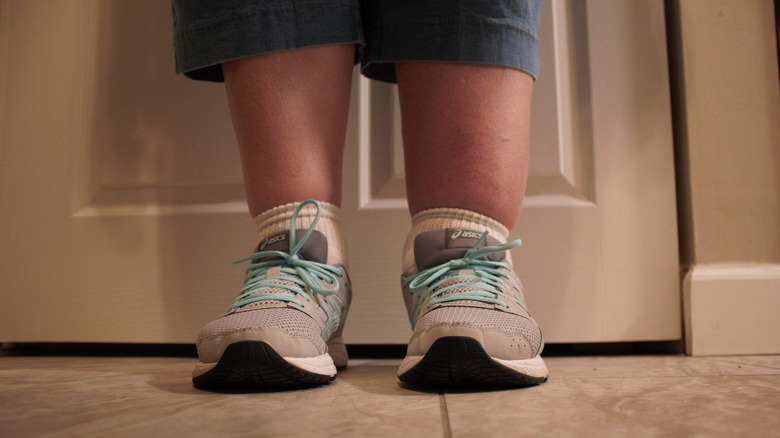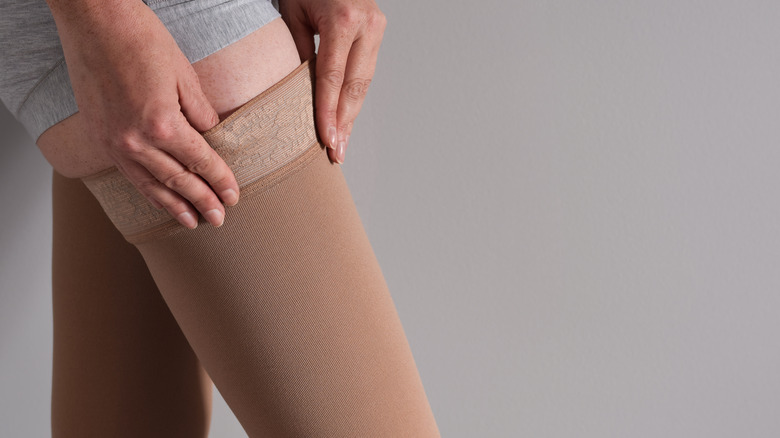What Is Lymphedema?
Lymphedema is a chronic condition in which a person's body tissues swell from a higher-than-normal amount of lymph fluid. According to Mayo Clinic, lymph fluid is supposed to drain bacteria and viruses out, but when it doesn't, blockage in the lymphatic system occurs, resulting in lymphedema. Cleveland Clinic reports the lymphatic system is a vital part of our bodies, specifically the immune system, as it protects us against infections.
Lymphedema is most commonly caused by cancer cells blocking lymph vessels or cancer treatment because lymph nodes are damaged or removed from surgery or radiation. Damage may include inflammation or scarring to the lymph nodes or vessels, according to the American Cancer Society. However, not everyone diagnosed with cancer or undergoing treatment will experience lymphedema.
While undergoing cancer treatment raises your chance of a lymphedema diagnosis, being overweight, of older age, or having rheumatoid arthritis also increases your chances. Also, Mayo Clinic reports lymphedema can also be caused by an infection of parasites, typically in tropical countries, that are blocking the lymph nodes.
Treatments for lymphedema
Lymphedema typically occurs in the arms and legs, however, it's possible for the condition to affect other areas of the body, such as the abdomen, genitals, and neck, Mayo Clinic explains. Those who suffer from lymphedema may notice swelling on a particular part of the body getting bigger over time. Symptoms of lymphedema also include clothing and jewelry not fitting correctly anymore, heaviness in arms and legs, and a tingling sensation in the affected area, according to the Centers for Disease Control and Prevention (CDC).
A cure for lymphedema has not yet been found, but there are treatment options in the meantime to provide relief. One of the best treatment options is simply exercising. Blocked lymph fluid may be more likely to drain by you moving your body. The CDC reports many people also turn to compression socks to alleviate the swelling or undergo a specific type of massage therapy known as manual lymph drainage to help push the lymph fluid out of swollen areas.


